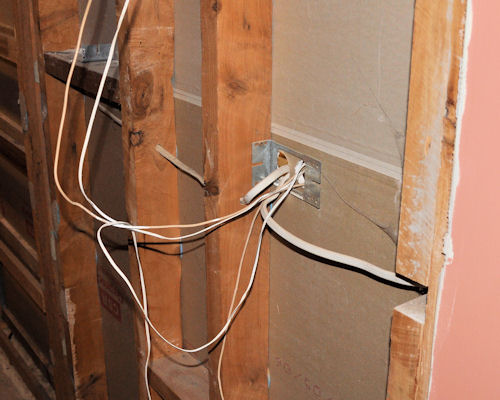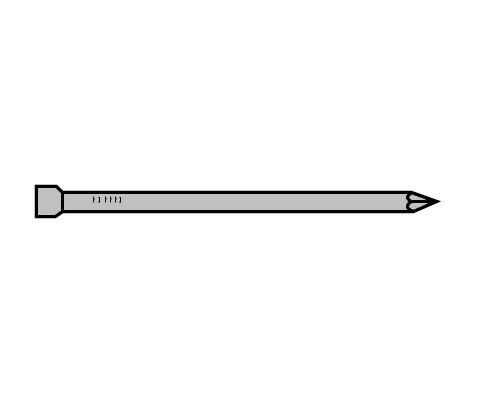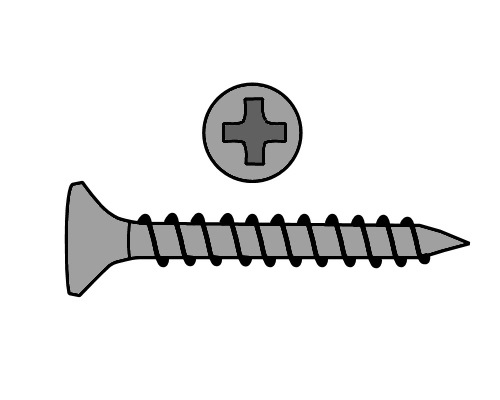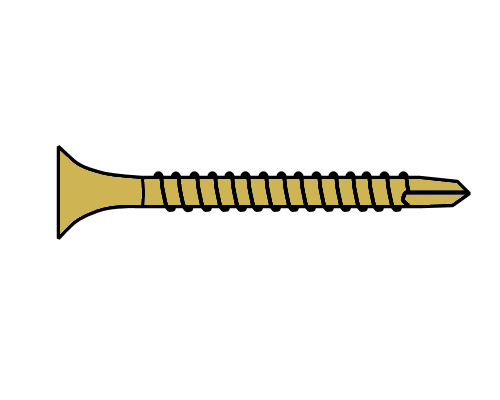Fasteners for stud walls
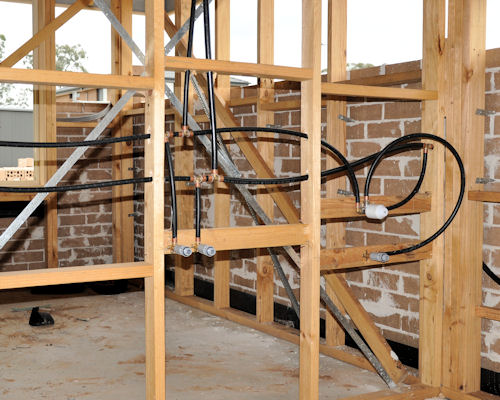 Audio for slide 1 (mp3 |6|KB)
Audio for slide 1 (mp3 |6|KB)
The wall frames are often called stud walls, because the main structural members are the vertical studs.
For more details on the structural aspects of these walls, see the unit: Installation requirements.

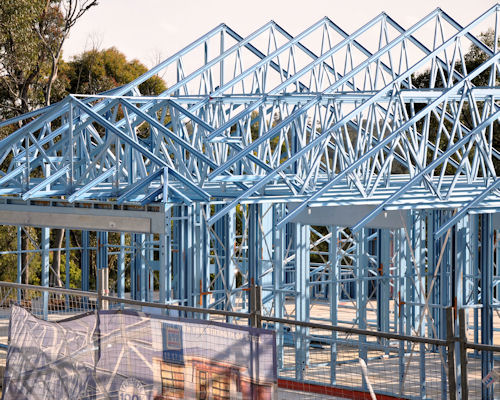 Audio for slide 2 (mp3 |6|KB)
Audio for slide 2 (mp3 |6|KB)
In the kitchen it is common to have plasterboard sheeting (such as 'Gyprock') fixed to the wall frame.
In the bathroom, the sheeting is more often fibre cement (such as 'Villaboard'), which is water resistant and easy to tile.

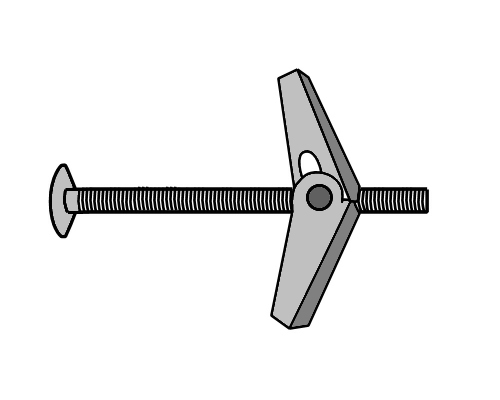 Audio for slide 7 (mp3 |6|KB)
Audio for slide 7 (mp3 |6|KB)
Toggle bolt
Toggle bolts are cavity fasteners - that is, they fix to the plasterboard or other internal wall lining material in the cavity between the studs. When the bolt is pushed through the hole, the toggle springs open and provides a restraint for the bolt as it is tightened. They are only suitable for light loads.

Learning activity
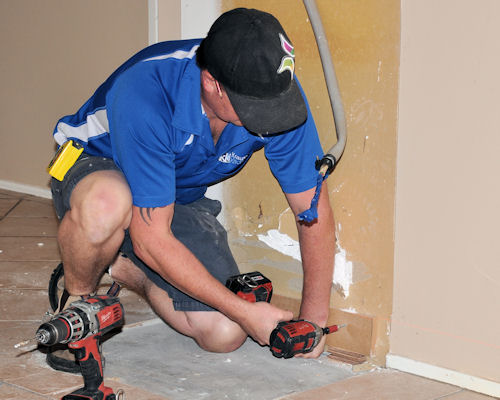 Audio for slide 8 (mp3 |6|KB)
Audio for slide 8 (mp3 |6|KB)
Like the masonry fasteners we discussed in the previous lesson, you have probably used some of these items on-site but not others. Again, there are various patented designs, such as 'Interset' cavity fasteners and 'Rawlnut' multi-purpose fasteners.
Choose a fastener that you either work with now or would like to know more about. Again, if you're not very familiar with the fastener, try to use it in a couple of jobs to see how it works.
When you've finished your research, write down the following details:
- Brand name of fastener
- General description (i.e. cavity fastener, timber fastener, steel fastener)
- Advantages (including the applications for which it is most suitable)
- Disadvantages (including situations where you would not use it).
Share your findings with your trainer and other learners in your group. You may take digital photos of the fastener, both loose and in a completed job, to include with your answers.



